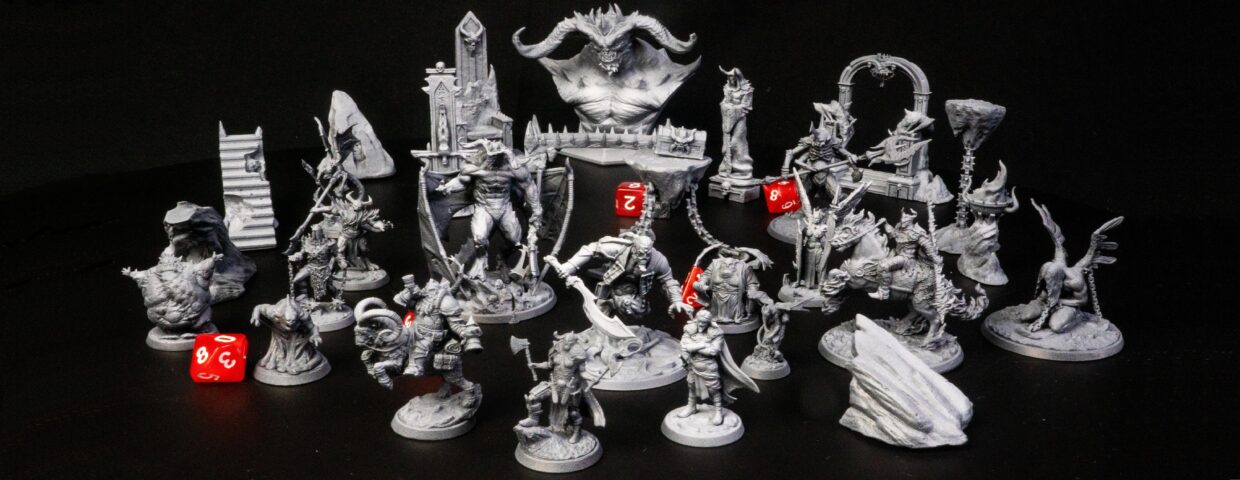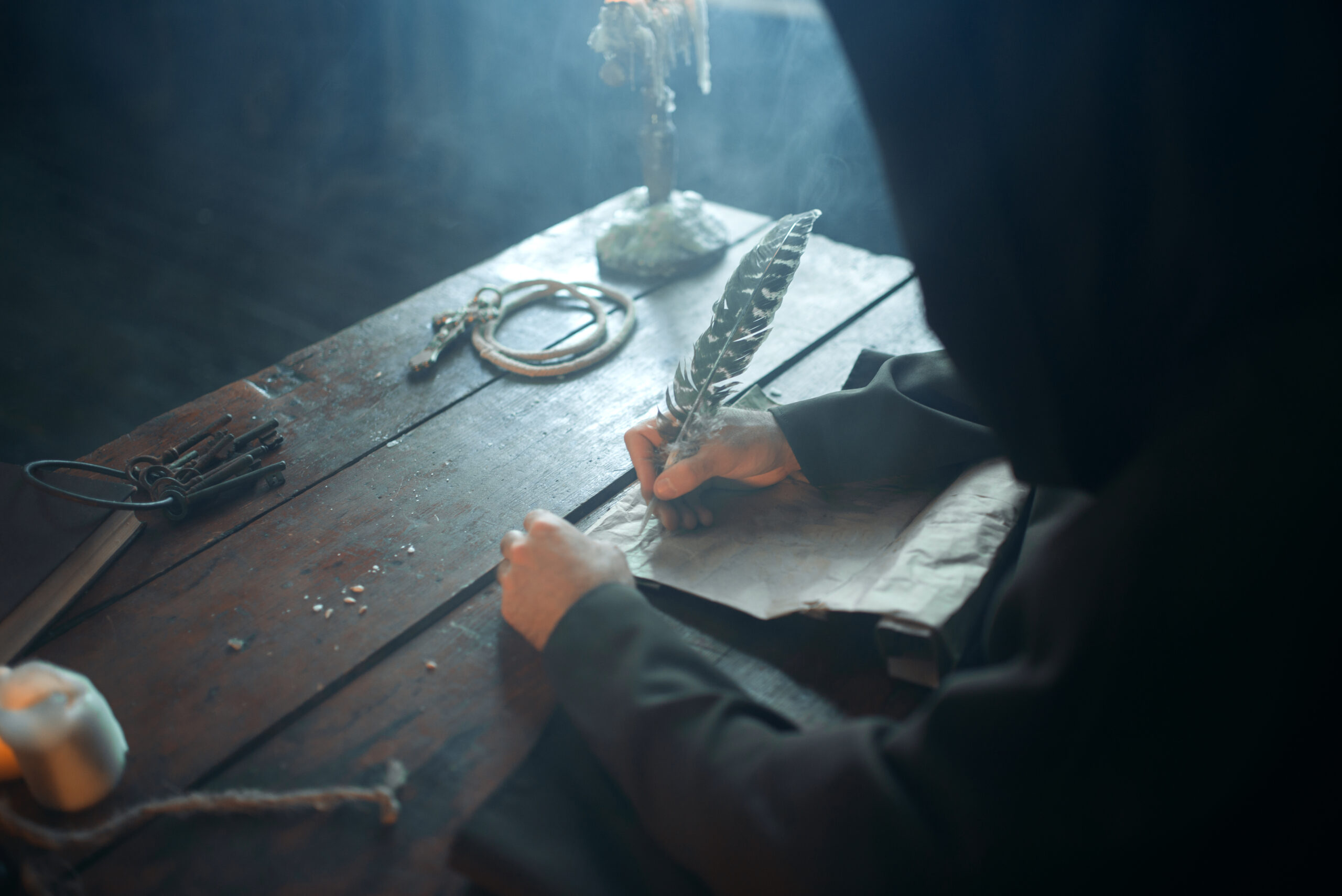How to Choose the Best Resin for Printing Minis
Making Sure You Get the Product that Fits Your Needs

I know how it feels when you’re just getting into the world of 3D printing. Maybe you’ve just finished the last bottle of resin that came as a gift with your printer. Maybe you bought it with no resin bottles included and you just need a simple, straightforward product to start the first dozen of the many hundreds of your incredible, spectacular miniatures (if you’re a little behind and not yet have your 3D printer, read this other post).
You then type “3D printer resin” on any preferred marketplace, hoping to get your product within a couple of minutes. There shouldn’t be many, pfft, it’s resin!
700+ results.
You hear a low rumble on the horizon. It’s far away, but you know it’s coming, inexorable, menacing – the decision fatigue. Here I go spending my next 4 hours getting an instant-PhD on 3D printer resins based on 15 YouTube channels (that will ruin your algorithm). Also based on a dozen more websites that half want to sell you something, half are trying to see just how many ads shoved within the text you can ignore without clicking away. Well, it’s either that or buyers’ remorse.
Uncomfortable amounts of authoral projection aside, it doesn’t have to be that way. As with most problems, there’s hardly ever one simple solution. So it gets down to each situation and its necessities and the compromises you’d be willing to take. As we’re specifically talking about miniatures, it gets easier to narrow down necessities and uses for your prints. While there isn’t a standardized method of cataloging the different kinds of 3D printer resins, it is acceptable to list the main types. They are standard, flexible, tough, water-washable, clear, heat-resistant (or ceramic), burnout (or castable) and dental. For the sake of organization, let’s qualify the last three examples as industrial resins. They are the ones which you wouldn’t normally use for 3D miniatures, statues, DIY home improvements and the like. Due to that, they won’t be touched upon any further.
Before You Start
Look, I need to put my grown up hat on for a minute or two. It’s not you, it’s me, but it’ll be good for everyone. There are some general guidelines that apply when 3D printing with resin and it’s best to get reminded of them. Don’t fear your printer, but definitely respect it.
Uncured resin is toxic. With that in mind, don’t let it touch your skin, let alone mouth, eyes and nose. Always handle the resin and printed parts that haven’t been washed and cured yet with gloves (nitrile and neoprene – NOT latex!). And I’d throw in some clear goggles and mask for good measure. Water-washable resin may sound better to handle, but above being a more accessible option, it’s still a resin. Touching this material once likely won’t give you side effects. Still, always wash any areas of contact with copious amounts of water for at least 15 minutes. If any negative effects persist (skin rashes, itchiness, irritation) or if someone ingests it, seek medical help immediately. You can also read more about how to protect your pets from toxic resin here.
Whew! It’s important to be mindful of safety precautions. You wouldn’t bungee jump without double-checking your equipment, nor would you stick scissors into a wall plug without making sure it’s off first (unless you’re 3-year-old me). Once these warnings are covered, we can jump into what would be best for your project.
Standard Resins
These are…er…standard. They’re both the most widely available and affordable you could find, with possible uses for just about anything you’d want regarding miniatures. You can identify these by not containing any of the myriad keywords that define other types of 3D printing resins (i.e. it doesn’t contain water-washable, flexible, clear, etc.), which will be listed further. With relative average mechanical resistance and durability, this type could be the best choice for 3D minis, except for the fact that it tends to break when shaped in such small parts. That would make your character’s sword or spear not as resistant as it should be. It is cheaper than the rest of them, though. And because of that, might be a good idea to get acquainted with this material before experimenting with other resin types, especially if you’re a beginner. And remember: always keep in mind the proper safety procedures whenever handling resin and uncured 3D prints.

Flexible Resins
These may also contain the words “rubber-like”, “soft”, “high-elongation” as descriptors. They’re called flexible because… Well, you can guess. While the idea of printing miniatures with flexible resins can sound odd to some, it makes sense according to the miniature you’d like to print. Regular resin, although resistant, can be very brittle once fully cured. Though not as hard, some useful nerds may describe this material as high tenacity. It can absorb shocks and deformations whilst being able to go back to its original shape. That is, it’s squishy. If your piece has lots of tiny, protrusion-like details, will be handled often or you just wish to be able to twist it a little from time to time, this type of resin is what’s best for you.
Tough Resins
This material gets its name from the fact that it has better mechanical properties compared to standard resins (remember tenacity???), while not being as soft as flexible resins. They may also contain “strong” or “ABS-like” in its name, the latter descriptor being familiar to those that have already worked with FDM printers. At the same time, these parts promise to last longer than standard resin prints (all of them being very durable, overall) and can be useful for prototyping and DIY-ing. It all comes with a cost, though – literally, they’re more expensive than standard 3D printer resins.
Water-washable Resins
As you may be familiar, the process of resin 3D printing requires post-processing that includes washing and curing. For most resins, the former involves some minutes submerged in either isopropyl alcohol or ethanol, followed by some more minutes in a UV chamber (or just under direct sunlight). These kinds of resins are self explanatory: they work with water instead of alcohol for the washing process. They may require extra post-processing and be less resistant compared to standard resins, though. In spite of sounding safer, all formal precautions for handling resin and 3D-printed parts still apply with this sort of material. Keep in mind the necessity of special procedures to discard the water that’s been used for washing your prints (same process as old resins or alcohol, really: just let the water, container, etc. bask in the sun for up to an hour before filtering solid pieces of resin).
Clear Resins
Come on, you’re a smart one. You know why they have this name, you can imagine. Go you. Also called “transparent” or “translucent”, these are incredible for simulating crystals and glass on your miniatures, statues or props. When washing, I’d watch out to have a clean, possibly new alcohol tank in order to not stain these pieces and try to make them as clear as possible (you can get some sort of clear coat to further enhance the transparent effect). Also, as resin reacts with UV light, you may expect them to yellow a bit over time. Especially if they get under the sun. Getting a 3D print properly clear takes some practice in order to find the best procedures for each brand. But is definitely worth the work!

Now that you know which resin you want, you can read this post about how to remove support marks from your minis.
Conclusions
As with most things in the 3D printing universe, mastering different resins depends on the objects you wish to print, how much you’re willing to spend and the patience/time you’d like to commit to it. Be aware if the resins you purchase are compatible with the printer you’re using, albeit almost all of the industry operates on a standard 405nm LCD screen. Even though most of the 3D prints can be acceptably done with standard resins, it’s always fun to explore, tweak and fuss with different materials. Worse that can happen is that you end up with more miniatures in diverse colors and sizes. It’s not like you signed up for this to print half a dozen things and stop there, now is it?
Loot Studios can help you print highly detailed minis, statues and props. Choose your favorite bundle from our previous releases or sign up for Fantasy or Sci-Fi to receive a new bundle every month. You can also check out some tips at our YouTube Channel.




